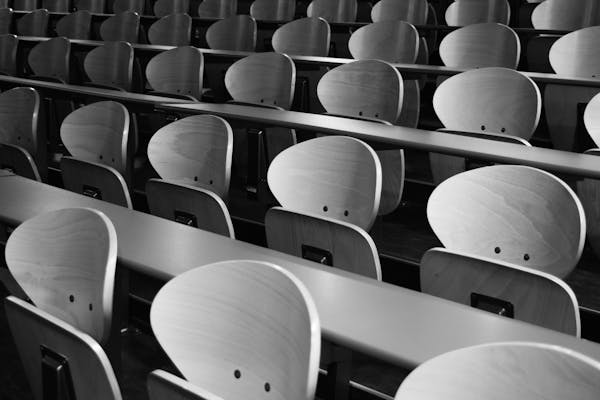And in this new and challenging era of a fast-paced technology-driven world that we live today the role of an educator is more crucial than it has ever been. Educational institutions (including schools and colleges) have the monumental challenge of preparing students for a world that is becoming both more complex and more dynamic at an increasingly rapid pace. Yet a concerning trend is taking hold — of administrators and policymakers focusing on bureaucratic goals, standardized testing, administrative tasks, and red tape over the genuine learning that students require. Focus needs to change. We need immediate action to make student learning central in education again.
Decline in the Prioritization on Learning
For the last few decades, education systems around the world have been increasingly judged upon their performance against fixed measures — whether these be scores in universal standardized tests, graduation rates, or national rankings. While data collection and compliance have their place, this took focus off real, transformational education.
All too often I find that schools apply the one-size-fits-all model and shove students through curricula as if they are widgets on an assembly line, ignoring individual learning styles or personal growth. The people being educated are trained to get scores on exams, not think about solutions and solve problems independently or smartly, and not realize their brains of which they have enough learned intelligence while laying out empathy— a quality urgently needed for real life that comes after the domain of classes! The result? Globally, students who are not adequately prepared to tackle real-world opportunities and challenges.
The Importance of Learning First
Lastly, education should do more than create data points or meet enrollment goals. It should make them curious, creative, and want to go out and explore; question everything around them. By providing students with this space, they can learn and remember the information better and, in addition, intrigue their interest in a lifelong love for education.
Also, focusing on learning supports equity. The reality is that, when education quantification abounds, many students — in particular from underserved and marginalized communities — are both the first and most negatively impacted by it. Such students often fall through the cracks of rigid systems that do not cater to their distinct needs, resulting in chronic poverty and generations of inequity. Educators who more deeply personalize learning experiences can help provide these inclusive and supportive environments.
What An Educator Or Administrator Can Do
The Diversification of Education: The current singular and centralized approach to education is incompatible with a creativity-fueled learning process. Administrators need to work on decreasing the focus of standardized testing so that it is not the only measure of success. Teachers should be able to adapt their teaching style by uniquely nurturing their learners and move away from the rote learning mode.
Provide More for Our Teachers:
Teachers are the centerpiece of a great education yet too few have the resources they need to do their jobs properly. Professional development in exciting instructional strategies, ways to manage the classroom effectively, and how to engage students can make all of the difference. We should provide teachers with the tools to help students succeed through experimentation while also providing trained district mentors and support teams to assist in their journey.
Use Technology Judiciously — While technology has the potential to disrupt (positively) education, it is a tool and should not replace learning entirely. Digital tools can offer personalized learning, which runs counter to the one-size-fits-all model, especially for students that need extra help. Still, administrators should not rely on tech as a replacement for true engagement and instruction.
Develop a Culture of Curiosity:
Classrooms should be spaces where students are curious, not just zones that stifle those questions. Students are motivated to learn better by engaging them with sharp questions, critical thinking, and gentle inquisitiveness. Having so much freed-up time means more opportunities for project-based learning, collaborative problem-solving, and even just seeing how what we’re teaching is relevant to the real world.
Involve Parents and Communities:
Learning does not happen in isolation. We know that strong partnerships between schools, parents, and the wider community serve as a foundation for student growth. Schools need to engage families in the education process, giving them tools and resources that allow for homework help etc. Finally, community-based projects and extracurricular activities can also give a more comprehensive learning experience.
Immediate Action Is Critical:
This is no easy feat, as the students of today are up against graver adversities. Whether it be navigating the minefield of mental health risks on social media or the reality of facing a cutthroat job market, young people need more than subject knowledge; they need resilience, critical thinking, and emotional intelligence. Thus, if the hollow child is to have a doctor bite down on a wooden stick and saw its limbs off at the joints while it remains awake and strapped down, then educators will back off of administration where they belong.
In conclusion, educational institutions need to rethink the way students learn and make the shift to align their learning style with individual student needs. This way, they can create contexts where the learners will not only do well in terms of academics but also personally and professionally. We have to focus on learning first and foremost — our students are counting on us.
